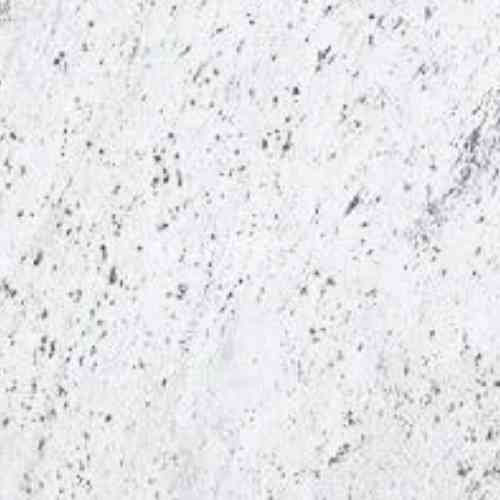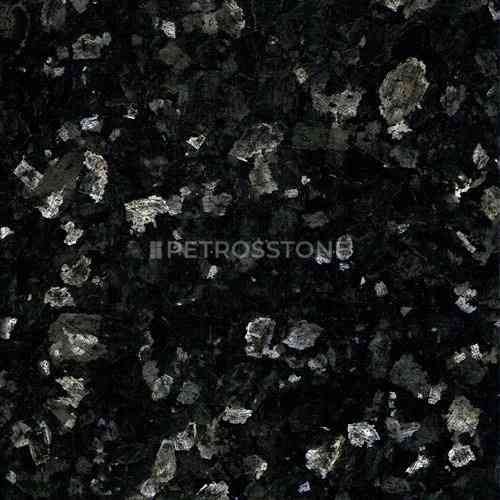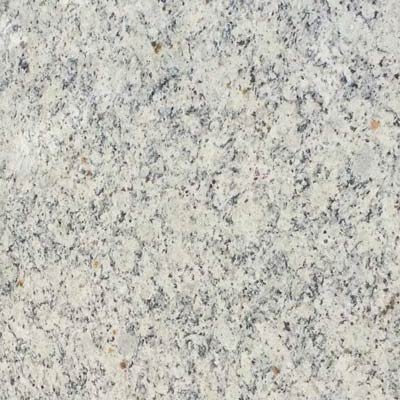
Discover the perfect stone bench. This guide covers stone bench designs, costs, types, and tips for choosing a supplier.
Choosing the right stone bench requires careful consideration of several factors. This article aims to provide the necessary information to make an informed decision. We will examine the key aspects of stone benches to help you select a bench that meets your needs and complements your surroundings.
Why Use Stone Benches?

Stone benches are seating structures crafted from natural stones like marble, granite, sandstone, and limestone.
Known for their durability, aesthetic appeal, and versatility, they can withstand weather conditions, making them ideal for various applications.
Stone benches offer several advantages:
- Durability: Stone is a strong material. It can withstand various weather conditions and heavy usage.
- Appearance: Stone has a natural beauty that many find appealing. Different types of stone offer a variety of colors and textures.
- Low Maintenance: Stone benches usually need very little upkeep. Ordinary cleaning with soap and water is sufficient.
- Versatility: Stone benches can be used in a wide range of settings, both indoors and outdoors.
- Property Value: A stone bench may add visual interest to a property and may increase its value.
- Eco-friendly: Natural stone has a low environmental impact.
These characteristics make stone benches a popular choice for homeowners and designers.
Are Stone Benches Too Heavy?
Yes, stone benches are quite heavy. It’s a very dense rock and one medium sized stone bench can weigh up to 100kg (220lbs). So we recommend only using stone benches in applications where frequent movements/relocations are not required.
Stone Bench Designs
Let’s look at some design possibilities and attach very approximate price ranges to them. Remember, these are just examples, and actual prices will vary considerably:
- Simple Rectangular Bench (Granite): A basic, flat-topped bench with straight legs, perhaps 4 feet long and 18 inches deep.
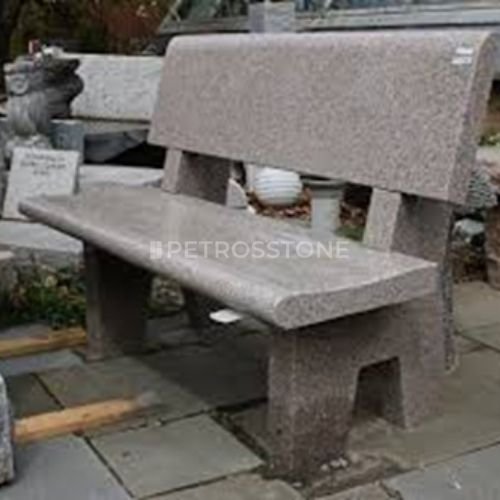
- Curved Garden Bench (Limestone): A gently curved bench with a rustic, honed finish, designed for a garden setting.

- Backless Bench with Polished Finish (Marble): A sleek, modern bench suitable for indoor use, with a highly polished surface

- Bench with Carved Details (Sandstone): A bench with decorative carvings on the legs or back, adding a touch of artistry.

- L-Shaped Corner Bench (Granite): A larger bench designed to fit in a corner, providing ample seating.
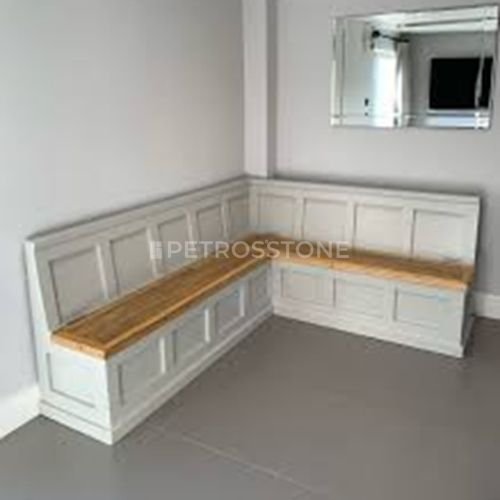
- Monolith Bench: Solid piece of rock, for example sandstone is used.

Standard Stone Bench Sizes and Thickness
While custom sizes are available, common dimensions include:
- Thickness: Typically ranges from 2 inches (5 cm) to 4 inches (10 cm).
- Length: Commonly ranges from 4 feet (120 cm) to 8 feet (240 cm).
- Depth: Typically ranges from 15 inches (38 cm) to 24 inches (60 cm).
Custom sizes can be requested from most manufacturers.
Cost of Stone Benches
The price of a stone bench depends on several factors:
Price Calculation:
- 1. Material Cost: This is the cost of the stone itself, and it depends on the type.
- 2. Cutting and Shaping: Labor and equipment needed to shape the stone.
- 3. Finishing: Any polishing, sealing, or other treatments.
- 4. Transportation: The cost of moving the bench to the desired location.
- 5. Installation: The cost of installing the bench, if applicable.
Factors Influencing Price:
Depending on below factors, the price of stone can vary:
- Stone Rarity: Less common stones are usually more expensive.
- Demand: High demand can increase prices.
- Stone Quality: Higher-quality stone with fewer imperfections costs more.
- Size and Thickness: Larger benches require more material and are more expensive.
- Design Complexity: Complex design increases labor costs; polished finishes are more expensive.
- Location: Prices may vary depending on geographic location.
Stone Bench Price List
| Sr. | Name | Image | Size | Finish | Price (USD/pc) |
| 1 | Granite | 36” x 16” x 2” and more | Natural, Rough, Honed | $50 Chat with us | |
| 2 | Marble | 36” x 16” x 2” and more | Polished, Honed, Brushed | $75 Chat with us | |
| 3 | Slate | 36” x 16” x 2” and more | Natural Cleft, Polished | $45 Chat with us | |
| 4 | Sandstone | 36” x 16” x 2” and more | Honed, Sandblasted | $65 Chat with us | |
| 5 | Limestone | 36” x 16” x 2” and more | Polished, Brushed | $53 Chat with us | |
| 6 | Traventine | 36” x 16” x 2” and more | Honed, Polished, Tumbled, Brushed | $85 Chat with us | |
| 7 | Quartzite | 42” x 16” x 2” and more | Honed, Polished, Leathered | $95 Chat with us |
Which Stone Bench is Best for You?
| Stone Type | Durability | Maintenance | Appearance | Price | Best Uses |
| Granite | Very High | Low | Varied | Medium-High | Outdoor, High-Traffic |
| Marble | Medium | High | Elegant | High | Indoor, Sheltered |
| Limestone | Medium | Medium-High | Natural | Low-Medium | Garden, Sealed |
| Sandstone | Medium | Medium-High | Textured | Low-Medium | Garden, Drier Climates |
| Slate | High | Low-Medium | Sleek | Medium | Indoor/Outdoor |
| Travertine | Medium | Medium-High | Fibrous, Concentric | Medium | Indoor/Outdoor |
| Quartzite | Very High | Low | Striking colours | High | Outdoors |
Types of Stone Used in Benches
Selection of stone affects both appearance and cost of the bench. Some common options:
Granite Bench
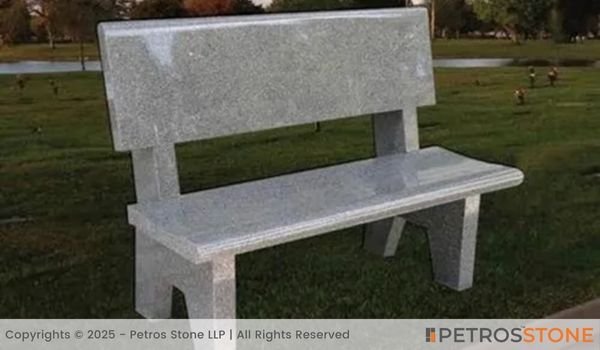
Granite is an igneous rock, formed from slowly cooling of magma deep within the Earth. This process results in an incredibly hard, dense, and durable material. It’s composed primarily of quartz, feldspar, and mica, which contribute to its wide range of colors and patterns. You’ll find everything from subtle grays and whites to vibrant pinks, greens, blues, and blacks, often with speckled or swirling patterns.
- Pros: Extremely durable, resistant to scratching, staining, heat, and weathering; low maintenance; vast color and pattern options.
- Cons: Can be more expensive than other stone types; can feel cold to the touch (especially in colder climates).
- Best Uses: High traffic areas, outdoor benches in all climates, kitchen countertops.
Marble Bench
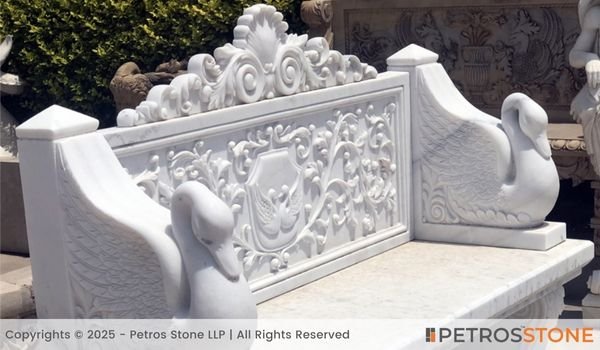
Marble is more beautiful because of the characteristic veining and swirling patterns that marble is famous for. It’s typically softer than granite, which makes carving easy, and comes in a range of colors, with white, cream, gray, and black being the most common.
- Pros: Unparalleled beauty and elegance; smooth, luxurious finish; relatively easy to carve and shape.
- Cons: Less durable than granite; more susceptible to staining, etching (from acidic substances), and scratching; requires more careful maintenance and sealing.
- Best Uses: Indoor benches, sheltered outdoor areas, sculptures, decorative elements.
Limestone Bench
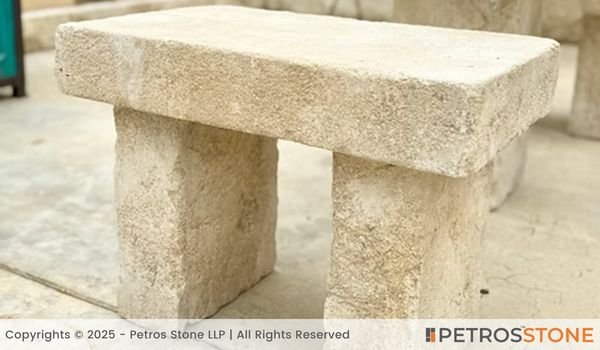
Limestone is a sedimentary rock. It’s typically composed of calcium carbonate and has a more porous and textured surface than granite or marble. Colors range from light beige and cream to gray and even brown.
- Pros: Natural, earthy appearance; relatively affordable; easy to work with.
- Cons: Porous and susceptible to staining, water damage, and freeze-thaw damage (in colder climates); requires regular sealing.
- Best Uses: Rustic garden benches, walls, paving stones (in warmer climates).
Sandstone Bench
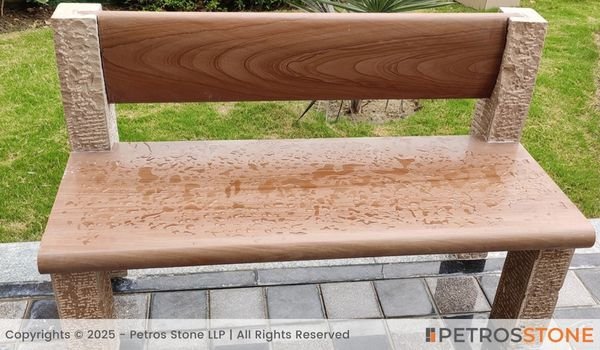
Sandstone, like limestone, is a sedimentary rock, but it’s formed from cemented sand grains (usually quartz and feldspar). This gives it a distinctive granular texture and a range of warm, earthy colors, from light tan and beige to deep red and brown.
- Pros: Unique, textured appearance; warm, inviting colors; relatively affordable.
- Cons: Porous, easily stained and eroded; must be sealed – especially for outdoor use; softer than other stones.
- Best Uses: Garden benches, walls, paving stones (in drier climates).
Slate Bench
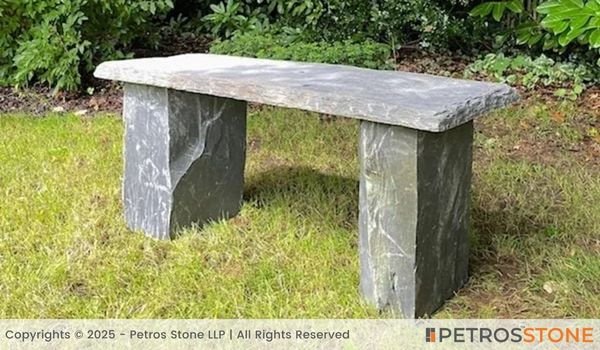
Slate is a metamorphic rock, formed from shale that has been subjected to heat and pressure. This material is finely granulated and tends to tear into thin, flat sheets (crackle). It is usually dark gray or black but slate can be green, purple or red.
- Pros: Durable and water-resistant; unique, sleek appearance; naturally slip-resistant (due to its texture).
- Cons: Limited color options; can be brittle and prone to chipping; can be more expensive than limestone or sandstone.
- Best Uses: Indoor and outdoor benches, roofing tiles, and flooring.
Travertine Bench
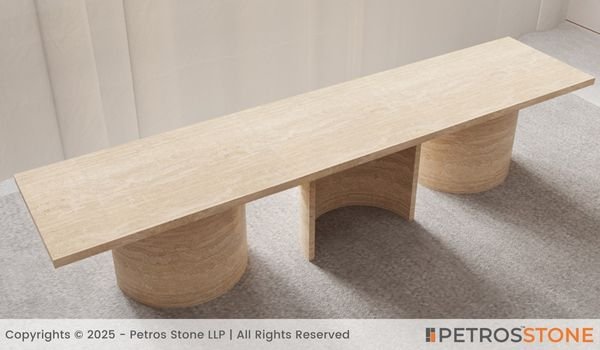
Travertine is a form of limestone deposited by mineral springs, especially hot springs. It is often used in construction and is known for its fibrous or concentric appearance. Travertine exists in white, tan, cream-colored, and even rusty varieties.
- Pros: Beautiful natural patterns, durable, easier to cut and shape than granite.
- Cons: Needs sealing; sensitive to acid.
- Best Uses: Patios, walkways, indoor and outdoor benches (with proper sealing).
Quartzite Bench
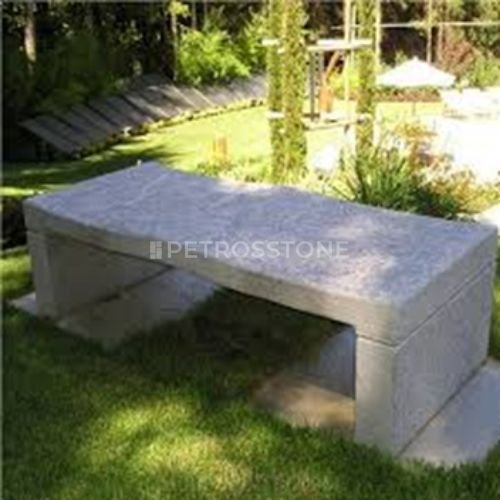
It is a hard, non-foliated metamorphic rock that was originally pure quartz sandstone.
- Pros: Harder than granite, resistant to scratching and etching, and has unique patterns.
- Cons: More expensive than other natural stones – might need professional installation because hard stones may need sealing, depending on the type.
- Best Uses: High-traffic areas, outdoor benches, and paving (where a very durable and weather-resistant material is needed).
Indoor and Outdoor Uses
Stone benches can be used in several locations.
Exterior Applications of Stone Benches:
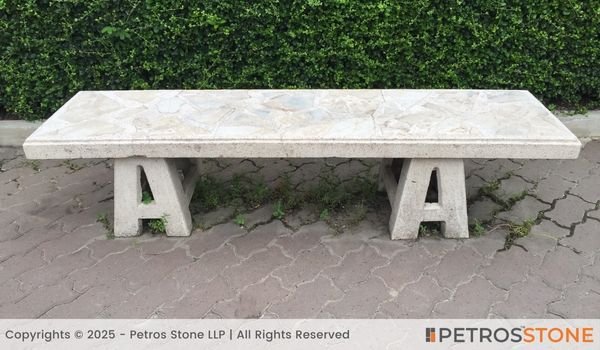
- Gardens: Integrated within landscapes, providing seating amidst plantings or overlooking water features. Suitable materials include limestone, granite, and sandstone.
- Patios/Decks: Furnishing for outdoor dining or lounging areas. Weather-resistant options such as granite or slate are recommended.
- Public Spaces/Parks: Durable and low-maintenance seating, resistant to heavy use and potential vandalism.
- Poolside Areas: Water and slip-resistant materials like slate or sealed travertine are ideal for proximity to pools or spas.
- Walkways/Paths: Benches along pedestrian routes to provide rest areas.
Interior Applications of Stone Benches:

- Entryways: Functional seating for shoe removal and a sophisticated design element. Marble or granite are suitable choices.
- Living Rooms: A minimalist stone bench can serve as a unique seating option and focal point.
- Bathrooms: Creates a spa-like ambiance and provides seating; marble or slate are appropriate.
- Mudrooms: Durable seating, resistant to dirt and moisture; granite or slate are recommended.
- Other: Conservatories and Hallways.
Need more Help?
A stone bench offers a combination of durability, aesthetic appeal, and functionality. By considering the type of stone, design, size, and cost, you can select a bench that meets your specific requirements and provides long-lasting use.
It is recommended to research and compare options from various suppliers before making a final decision. A well-chosen stone bench can enhance any indoor or outdoor space.
For a wide selection of high-quality stone benches and expert consultation, contact Petrosstone today.
Frequently Asked Questions
Q: How do I clean a stone bench?
A: You can Use a mild soap and water solution. Avoid harsh chemicals.
Q: Does my stone bench need sealing?
A: Porous stones like limestone and sandstone require sealing. Granite and slate may not require sealing, but it can provide added protection.
Q: Can a chipped or cracked stone bench be repaired?
A: Small chips and cracks can often be repaired by professionals.
Q: How do I choose the correct size bench?
A: Measure the intended location and consider the surrounding space.
Q: What is the best stone for cold climates?
A: Granite is generally the best choice for cold climates due to its durability. Slate is also a suitable option.
Q: How is the bench delivered?
A: It is typically delivered using a forklift due to its weight.
Feel free to get in touch for a free consultation, quote, and get a detailed understanding from our experts here at Petros®. Visit https://petrosstone.com/ or call +91-8446360361 and WhatsApp

Hi, I’m Dhananjay,
With a background in architecture and years of industry experience, I share insights on materials that shape great design. At Petros® Stone, I craft content that highlights the beauty and utility of natural stone, helping architects, builders, and homeowners make informed choices while strengthening the brand’s voice and online presence.
Brown Granite
White Galaxy Granite
Blue Bahia Granite
Silver Cloud Granite
Black Pearl Granite
Dallas White Granite


